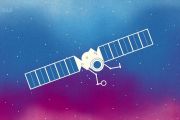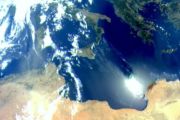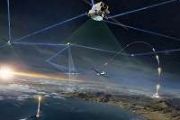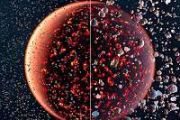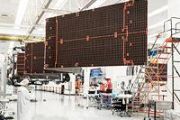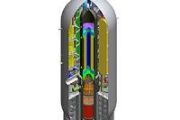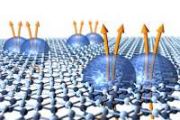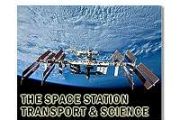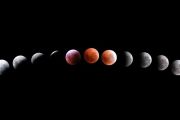
Copernical Team
Dust removal delayed: Sols 3962-3963
 Earth planning date: Wednesday, September 27, 2023: Our exploration of the light-and-dark-toned bands continues today as Curiosity has completed another successful drive and now has a promising block of light-toned bedrock in its latest workspace. With a thorough investigation of the compositions and textures within this region, we hope to identify what factors cause the differences between the
Earth planning date: Wednesday, September 27, 2023: Our exploration of the light-and-dark-toned bands continues today as Curiosity has completed another successful drive and now has a promising block of light-toned bedrock in its latest workspace. With a thorough investigation of the compositions and textures within this region, we hope to identify what factors cause the differences between the Double DRT for a Soliday: Sols 3964-3965:
 Earth planning date: Friday, September 29, 2023: Welcome to another weekend in Gale crater, Mars! As Abigail Knight described in Wednesday's blog, we elected not to drive last plan while we waited for the workspace imaging from Navcam and Mastcam to arrive on Earth. All went as expected and we received the necessary imaging to assess the terrain well enough for using our DRT on the beautiful lig
Earth planning date: Friday, September 29, 2023: Welcome to another weekend in Gale crater, Mars! As Abigail Knight described in Wednesday's blog, we elected not to drive last plan while we waited for the workspace imaging from Navcam and Mastcam to arrive on Earth. All went as expected and we received the necessary imaging to assess the terrain well enough for using our DRT on the beautiful lig Chang'e 6 scheduled for lunar landing next year
 The Chang'e 6 mission, China's next robotic expedition to the moon, has been scheduled to land on the moon next year, tasked with bringing back samples from the little-known far side, according to the China National Space Administration.
So far, the Chang'e 6 project has progressed smoothly and according to plan, the administration said in a news release on Friday.
To facilitate comm
The Chang'e 6 mission, China's next robotic expedition to the moon, has been scheduled to land on the moon next year, tasked with bringing back samples from the little-known far side, according to the China National Space Administration.
So far, the Chang'e 6 project has progressed smoothly and according to plan, the administration said in a news release on Friday.
To facilitate comm Initial curation of NASA's OSIRIS-REx sample delayed
 The initial curation process for NASA's OSIRIS-REx sample of asteroid Bennu is moving slower than anticipated, but for the best reason: the sample runneth over. The abundance of material found when the science canister lid was removed earlier this week has meant that the process of disassembling the TAGSAM (Touch-and-Go Sample Acquisition Mechanism) head - which holds the bulk of material from t
The initial curation process for NASA's OSIRIS-REx sample of asteroid Bennu is moving slower than anticipated, but for the best reason: the sample runneth over. The abundance of material found when the science canister lid was removed earlier this week has meant that the process of disassembling the TAGSAM (Touch-and-Go Sample Acquisition Mechanism) head - which holds the bulk of material from t Law professor calls for ethical approach to human experiments in space
 University of Mississippi law professor Michelle Hanlon co-authored an article published (Sept. 28) in the journal Science that offers best practices for human research in space.
Each time astronauts venture into space provides researchers with data on how the human body reacts to long-term exposure to zero gravity and other facets of space life. As the race to build communities, tourism a
University of Mississippi law professor Michelle Hanlon co-authored an article published (Sept. 28) in the journal Science that offers best practices for human research in space.
Each time astronauts venture into space provides researchers with data on how the human body reacts to long-term exposure to zero gravity and other facets of space life. As the race to build communities, tourism a Global team recommends ethical rules for human research in commercial spaceflight
 The first ethical framework for conducting human research on commercial spaceflight was proposed in an article in Science by an international team that included Hastings Center president Vardit Ravitsky. Ravitsky's contribution focused on promoting diversity among the researchers and participants, which is essential to ensuring the research benefits society at large.
Human research on comm
The first ethical framework for conducting human research on commercial spaceflight was proposed in an article in Science by an international team that included Hastings Center president Vardit Ravitsky. Ravitsky's contribution focused on promoting diversity among the researchers and participants, which is essential to ensuring the research benefits society at large.
Human research on comm GITAI passes all NASA safety reviews for ISS external demonstration
 GITAI USA Inc. and GITAI Japan Inc. (GITAI), the world's leading space robotics startup, successfully completed all NASA safety reviews required for the ISS external demonstration. Furthermore, GITAI handed over the GITAI robotic flight model to NASA in August 2023 and is now ready for launch. The GITAI robotic flight model is scheduled to journey to the ISS for its deployment in early 2024. Ple
GITAI USA Inc. and GITAI Japan Inc. (GITAI), the world's leading space robotics startup, successfully completed all NASA safety reviews required for the ISS external demonstration. Furthermore, GITAI handed over the GITAI robotic flight model to NASA in August 2023 and is now ready for launch. The GITAI robotic flight model is scheduled to journey to the ISS for its deployment in early 2024. Ple Ethical guidelines needed before human research in commercial spaceflight is ready for liftoff
 A global, multidisciplinary team of bioethicists, health policy experts, commercial spaceflight professionals and space health researchers, including Rachael Seidler from the University of Florida, has developed guiding principles and best practices to help ensure human research conducted in space is safe and inclusive.
The proposed ethical guidelines were released Friday in a policy paper
A global, multidisciplinary team of bioethicists, health policy experts, commercial spaceflight professionals and space health researchers, including Rachael Seidler from the University of Florida, has developed guiding principles and best practices to help ensure human research conducted in space is safe and inclusive.
The proposed ethical guidelines were released Friday in a policy paper Maritime Launch unveils commercial suborbital program at Spaceport Nova Scotia
 Maritime Launch Services Inc. (NEO: MAXQ; OTCQB: MAXQF) unveiled its suborbital launch program currently scheduled to begin during the second quarter of 2024.
Maritime Launch's suborbital program called Dedicated Altitude Research and Testing (DART), is a program designed to offer flight opportunities to researchers across a wide range of mission capabilities, ranging from building and tes
Maritime Launch Services Inc. (NEO: MAXQ; OTCQB: MAXQF) unveiled its suborbital launch program currently scheduled to begin during the second quarter of 2024.
Maritime Launch's suborbital program called Dedicated Altitude Research and Testing (DART), is a program designed to offer flight opportunities to researchers across a wide range of mission capabilities, ranging from building and tes Scientists observe the influence of gravity on antimatter for the first time
 Scientists have demonstrated the existence of gravity between antimatter and Earth, reaffirming Albert Einstein's General Theory of Relativity.
It is thought that Isaac Newton's historic work on gravity was inspired by watching an apple fall to Earth from a tree. But for decades, scientists have wondered what would happen to an "anti-apple" made of antimatter - would it fall in the same wa
Scientists have demonstrated the existence of gravity between antimatter and Earth, reaffirming Albert Einstein's General Theory of Relativity.
It is thought that Isaac Newton's historic work on gravity was inspired by watching an apple fall to Earth from a tree. But for decades, scientists have wondered what would happen to an "anti-apple" made of antimatter - would it fall in the same wa 











